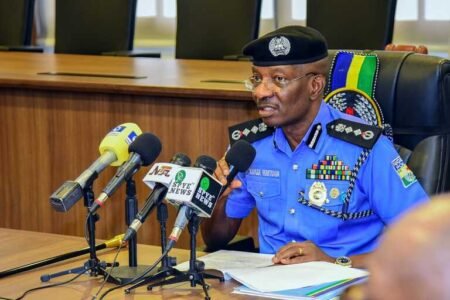The United States and Russia have taken the first steps in direct negotiations over the Ukraine conflict, holding a 4.5-hour meeting in Riyadh, Saudi Arabia.
This marks a shift from Washington’s previous strategy of uniting Western allies to pressure Moscow. During the discussions, Russia made it clear it would not tolerate Ukraine joining NATO.
Speaking to reporters in Palm Beach, Florida, Trump said he felt “more confident” after the meeting and predicted a meeting with Putin before the end of the month. Brushing off Ukraine’s concerns about being excluded, he stated, “I think I have the power to end this war,” and suggested Kyiv should have engaged in negotiations earlier.
The talks are the first of their kind between the two nations since Russia’s full-scale invasion of Ukraine in 2022. Ukrainian officials, along with European leaders, have voiced concerns that any agreement reached without Kyiv’s involvement could undermine its sovereignty. German Chancellor Olaf Scholz emphasized, “There must be no decision over the heads of Ukraine.”
Ahead of the talks, some European politicians criticized Trump’s administration for what they saw as premature concessions. Last week, Washington ruled out Ukraine’s NATO membership and acknowledged the difficulty of reclaiming Russian-occupied territory.
U.S. National Security Adviser Mike Waltz acknowledged that any potential deal would likely involve discussions on land and security guarantees. “Just a practical reality is that there is going to be some discussion of territory and there’s going to be discussion of security guarantees,” Waltz said.
Both nations agreed to establish high-level teams to negotiate an end to the war and work on restoring their diplomatic missions in Washington and Moscow. U.S. Secretary of State Marco Rubio noted, “I came away from the initial talks convinced that Russia was willing to begin to engage in a serious process, but that reaching peace would involve concessions from all sides.”
Despite U.S. optimism, Russia did not offer any concessions in the talks. While Washington assured allies that no one was being sidelined, Ukrainian President Volodymyr Zelenskiy postponed his planned visit to Saudi Arabia, reportedly to avoid legitimizing the negotiations.
Ukraine maintains that no agreement can be made without its direct involvement, and former Pentagon official Evelyn Farkas cautioned that if a deal does not align with Ukraine’s interests, “In the worst case scenario, Ukraine will keep fighting. If their defenses crumble, I don’t think that the American people want to see those pictures on television and to be held responsible.”
As discussions continue, European leaders are considering contributing peacekeepers to enforce any potential settlement. However, Russian Foreign Minister Sergei Lavrov firmly rejected the idea of NATO troops in Ukraine, stating, “Of course, this is unacceptable to us.”
Lavrov also hinted at the possibility of easing economic restrictions, emphasizing “high interest” in lifting barriers imposed after Russia’s invasion. Rubio acknowledged that lifting sanctions would require European involvement, but noted that an end to the war could “unlock opportunities for U.S.-Russian cooperation, including some pretty unique, potentially historic economic partnerships.”
The rapid developments, which began with a Trump-Putin phone call just six days ago, have sparked concerns in Ukraine and among European allies. Critics fear that the U.S. could strike a deal that benefits Moscow while leaving Ukraine vulnerable to future threats.
U.S. Representative Jake Auchincloss, a co-chair of the bipartisan House Ukraine Caucus, warned, “Russia has won Round One. The Kremlin has been normalized in bilateral diplomacy that excludes Ukraine and NATO, and they gave up nothing to get that.”
While no date has been set for a Trump-Putin meeting, both leaders have expressed interest in further dialogue. The future of Ukraine’s war—and the broader geopolitical landscape—now hinges on how these negotiations unfold.











